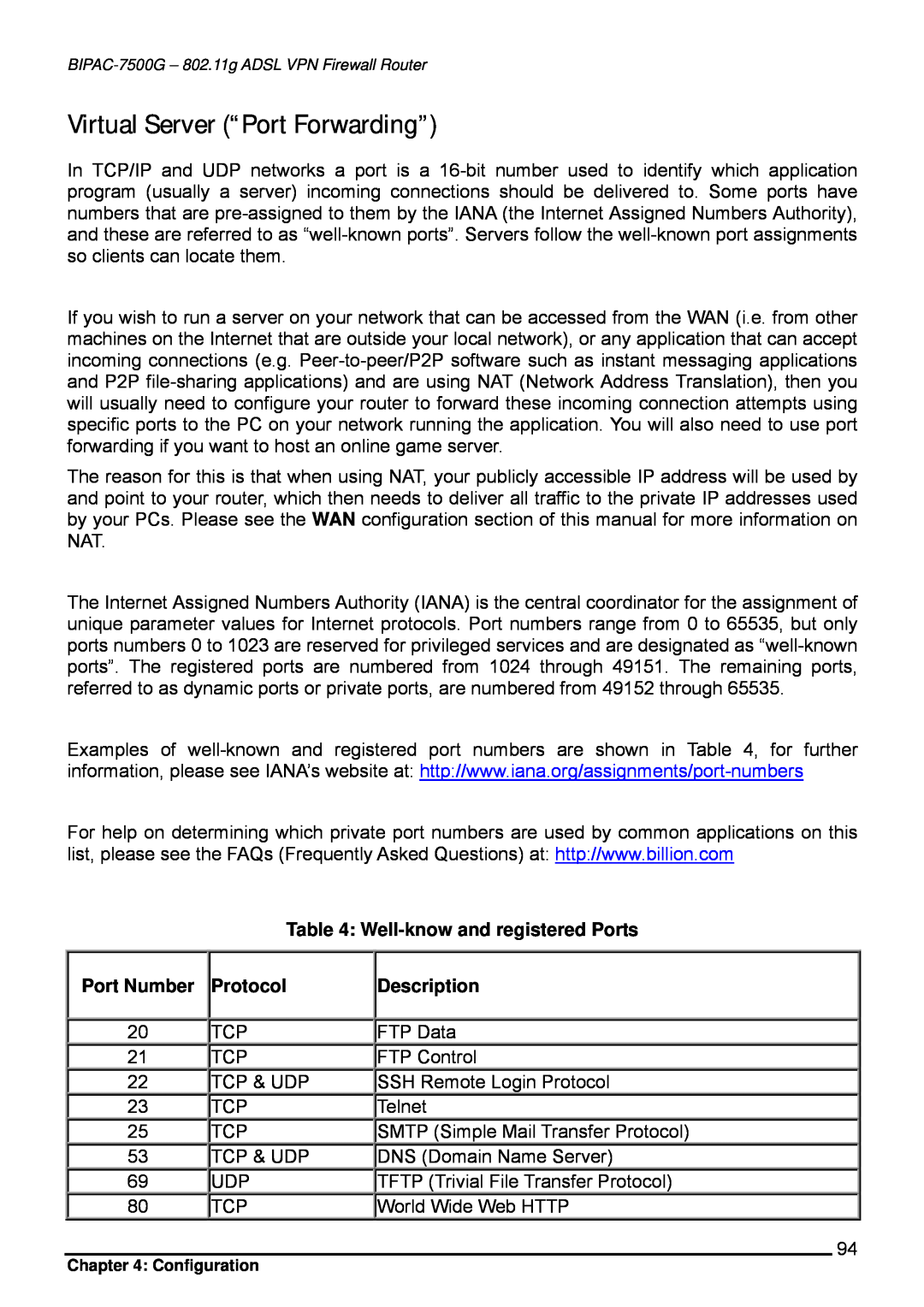
Virtual Server (“Port Forwarding”)
In TCP/IP and UDP networks a port is a
If you wish to run a server on your network that can be accessed from the WAN (i.e. from other machines on the Internet that are outside your local network), or any application that can accept incoming connections (e.g.
The reason for this is that when using NAT, your publicly accessible IP address will be used by and point to your router, which then needs to deliver all traffic to the private IP addresses used by your PCs. Please see the WAN configuration section of this manual for more information on NAT.
The Internet Assigned Numbers Authority (IANA) is the central coordinator for the assignment of unique parameter values for Internet protocols. Port numbers range from 0 to 65535, but only ports numbers 0 to 1023 are reserved for privileged services and are designated as
Examples of
For help on determining which private port numbers are used by common applications on this list, please see the FAQs (Frequently Asked Questions) at: http://www.billion.com
Table 4: Well-know and registered Ports
Port Number Protocol
20![]()
![]() TCP
TCP
21![]()
![]() TCP
TCP
22![]()
![]() TCP & UDP
TCP & UDP
23![]()
![]() TCP
TCP
25 | TCP |
53 | TCP & UDP |
69![]()
![]() UDP
UDP
80![]()
![]() TCP
TCP
Description
![]()
![]() FTP Data
FTP Data
![]()
![]() FTP Control
FTP Control
![]()
![]() SSH Remote Login Protocol
SSH Remote Login Protocol
![]()
![]() Telnet
Telnet
![]()
![]() SMTP (Simple Mail Transfer Protocol)
SMTP (Simple Mail Transfer Protocol)
![]()
![]() DNS (Domain Name Server)
DNS (Domain Name Server)
![]()
![]() TFTP (Trivial File Transfer Protocol)
TFTP (Trivial File Transfer Protocol)
![]()
![]() World Wide Web HTTP
World Wide Web HTTP
94
Chapter 4: Configuration
